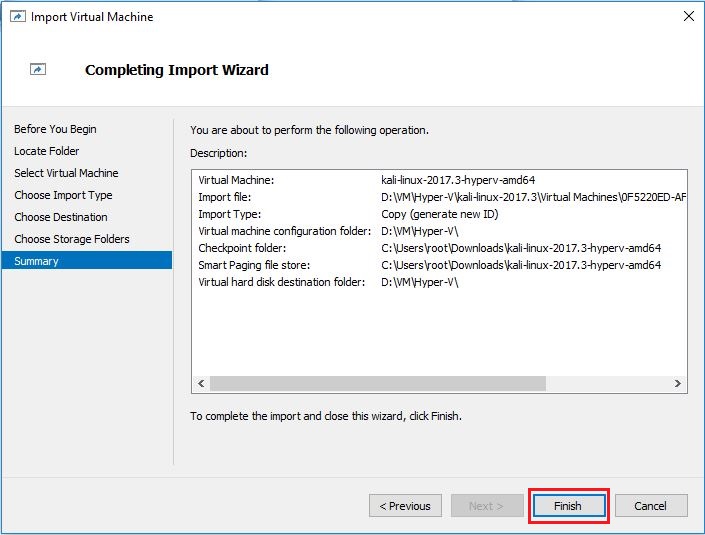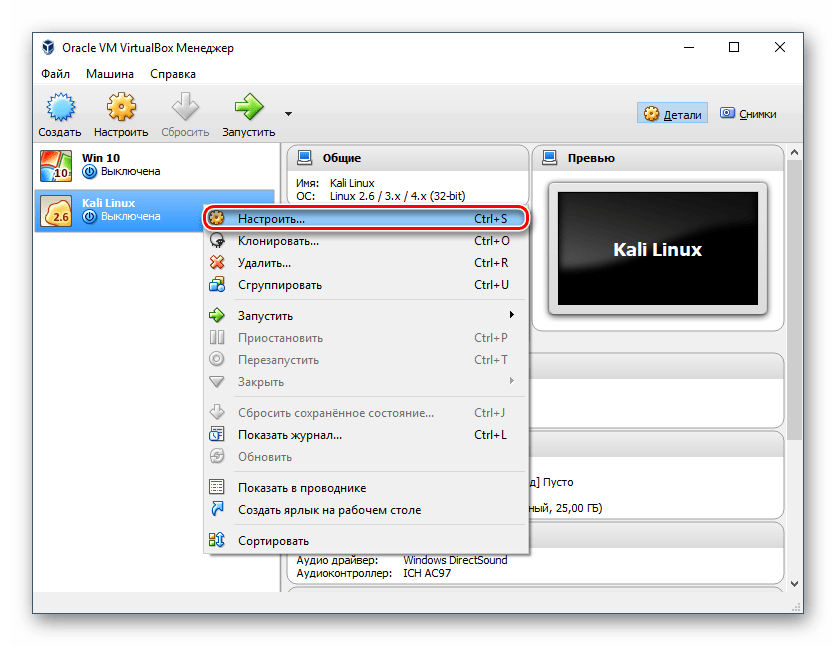

- #Kali vm for windows 10 hyper v upgrade#
- #Kali vm for windows 10 hyper v pro#
- #Kali vm for windows 10 hyper v windows 8.1#
- #Kali vm for windows 10 hyper v windows 7#
#Kali vm for windows 10 hyper v windows 7#
Personally, my Linux and Windows XP virtual machines get 512 MB to 1 GB, Windows 7 and 8.1 virtual machines 1 GB to 2 GB, and Windows 10 virtual machines 3 or 4 GB, exception being my video editing VM which gets 6 GB. If you want to assign a VM 5673 MB it’s totally OK, as would be 1789 or 3197 MB. Hyper-V accepts any amount of vRAM above the required minimum. Yes, that’s right, no typos there: 3 GB and 5 GB! Somewhat surprisingly, I’ve noticed that we IT pros are so accustomed to RAM amounts as 1 GB, 2 GB, 4 GB, 8 GB and so on that we tend to forget that in Hyper-V, you really can set the amount as you wish with increments of 1 MB. On the other hand, based on my own experience a VM used for instance for video editing requires 5 GB or more. To assure that there will be at least 2 GB free available RAM on host at any given time, I can in other words simultaneously use virtual machines that consume a total of 9 GB of vRAM: Total RAM 16 GB - RAM host is using to run smoothly 5 GB - 2 GB reserve = 9 GB.Ī Windows 10 圆4 VM runs really smoothly when it has 3 GB.
#Kali vm for windows 10 hyper v pro#
When Windows 10 PRO installed on it has booted to desktop, and I have my chosen browser Edge opened with six or seven tabs, I usually have about 11 GB free. Using this laptop of mine as an example, I have 16 GB of RAM. The rule of thumb (read: my rule!) is to always leave the host at least 2 GB available RAM. You can of course “trick” the VM to temporarily increase the amount of vRAM by slowly opening various programs demanding more and more vRAM until VM has enough to do the task required, then close those apps and rapidly start the process requiring all that vRAM, but it is much more efficient and in fact time saving to set VM not to use dynamic vRAM in the first place and instead assign it a fixed (and sufficient) amount of vRAM to work with.
#Kali vm for windows 10 hyper v upgrade#
Thus, the upgrade can’t be completed without first switching the VM off and either increasing minimum dynamic vRAM or changing to fixed vRAM.
#Kali vm for windows 10 hyper v windows 8.1#
The following screenshot shows what happens if you try to run a Windows 10 upgrade on the previously described Windows 8.1 VM:Īlas, the VM sends the demand for more vRAM to the host too late, or as in the case of this VM and a Windows upgrade, it does not demand it at all. Trying to run a program that requires more RAM that is currently available, or which has a built-in check for minimum RAM for program to run whose requirements exceed currently allocated RAM, you will get an error message. For example: A Windows 8.1 PRO VM in Hyper-V with dynamic RAM, minimum set to 1 GB, maximum 4 GB.

It is OK if the VM will never be used to anything else than simple browsing and email, but it is not recommended for “work horse” virtual machines. I very strongly advice against selecting and using dynamic RAM for Hyper-V VMs. However, the VM will be and is a bit slow in demanding more RAM when it needs it, which causes issues when you want to launch a process or program that needs more RAM than is currently allocated. The VM uses the amount of RAM it needs within assigned minimum and maximum values, taking more from the host RAM when it needs it and freeing it when it’s no longer needed. For more information about NUMA please consult: (v=ws.11).įor instance, if I try to add more than 4 vCPUs to virtual machines on this laptop, I get an error message that in my case, four vCPUs is maximum:Īs a concept, dynamic RAM is pretty nice. Selecting the count for vCPUs lets you choose the number of virtual processors, where the maximim count is restricted on Windows 10 hosts by the hardware setup and by Non-Uniform Memory Access (NUMA). Both of these give you some choices.Īssigning vRAM you can elect if you use dynamic RAM giving VM minimum and maximum values for assigned RAM which it then takes and frees from host RAM according to its needs. There are two things to consider when creating a virtual machine to assure it will run properly: first, the amount of virtual RAM (vRAM from here on) and second, the number of virtual processors (vCPU).


 0 kommentar(er)
0 kommentar(er)
